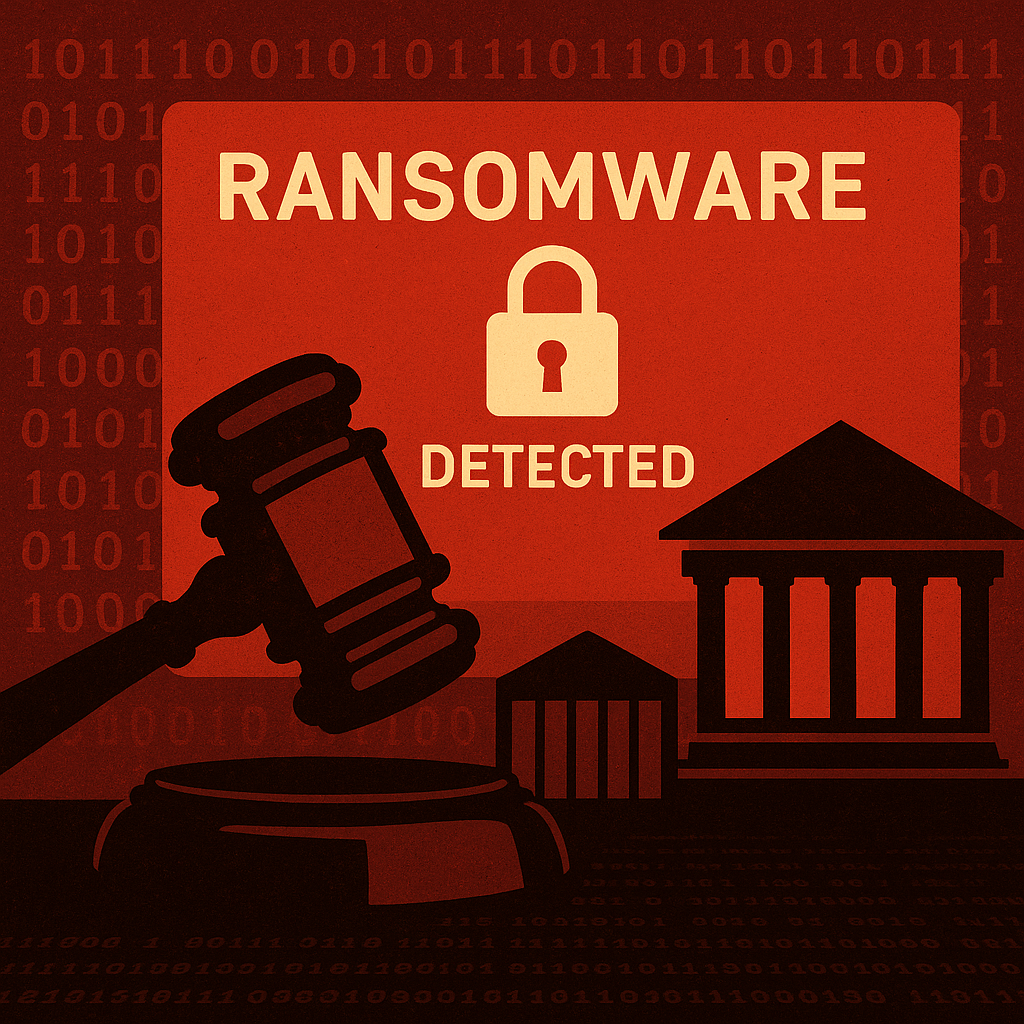Introduction
At 4:30 a.m. on September 4, 2025, the Orleans Parish Sheriff’s Office (OPSO) in New Orleans fell victim to a ransomware attack. By 8:00 a.m., staff realized they had lost access to critical computer systems. Sheriff Susan Hutson confirmed the attack publicly, noting that while several networks were impacted, the jail’s management system remained operational because it was hosted on a separate server.
This incident is a stark reminder that ransomware continues to be one of the most disruptive and costly threats to public-sector organizations—and sheriff’s offices are high-value targets because of the sensitive data they manage.
What Happened (and What Didn’t)
The ransomware attack disrupted portions of OPSO’s IT infrastructure, but segmentation spared the jail management system, which kept day-to-day corrections operations running. As of now, OPSO IT teams are working to contain the incident, restore access, and assess the scope of data exposure.
The good news: core jail operations remained functional. The bad news: any system downtime in law enforcement risks cascading effects for courts, public defenders, and citizens who rely on timely access to records.
Why Sheriff’s Offices Are Prime Targets
Sheriff’s offices sit at the nexus of law enforcement, corrections, and the courts. That makes their IT systems especially attractive to attackers seeking ransom, data theft, or both.
They manage:
- Criminal Justice Information (CJI) and Criminal History Record Information (CHRI): arrest data, warrants, biometrics, and case outcomes—governed by FBI CJIS Security Policy and 28 CFR Part 20.
- Inmate records and operational data: housing logs, movement history, evidence files, and video/audio from body cameras.
- Health information: detainee medical and behavioral health records, often protected under HIPAA and 42 CFR Part 2.
- Personnel and visitor data: employee PII, security clearances, and access logs.
A breach here isn’t just an IT issue—it’s a public trust and legal compliance crisis.
What’s at Risk in This Type of Attack
- Exposure of sensitive inmate records (including medical data).
- Compromise of criminal justice databases, potentially leading to wrongful releases or missed court appearances.
- Theft of staff personal data for identity fraud.
- Operational paralysis if systems for booking, warrants, or evidence are locked.
The OPSO attack underscores why sheriff’s offices need to treat ransomware readiness as mission critical, not optional.
Five Defenses That Move the Needle
The OPSO segmentation decision already proved valuable. Here are five best practices that can prevent or at least reduce the blast radius of ransomware:
- Identity Hardening with MFA Everywhere
- Enforce multi-factor authentication (MFA) for all staff, especially administrators.
- Adopt phishing-resistant methods (FIDO2 security keys, app-based prompts).
- Network Segmentation & Least Privilege
- Keep jail, records, and evidence systems on separate networks.
- Enforce least-privilege access to sensitive systems.
- Patch and Vulnerability Management
- Prioritize patching internet-facing systems.
- Automate vulnerability scanning with remediation SLAs.
- Endpoint Detection & Response (EDR/XDR)
- Deploy EDR to monitor suspicious behavior.
- Automate isolation of compromised endpoints to contain spread.
- Resilient, Tested Backups
- Keep backups offline, encrypted, and immutable.
- Test restorations regularly to ensure recovery readiness.
(For more on how attackers gain entry, see our post on RFQ phishing scams, one of the most common delivery methods for ransomware.)
What to Do Next Week
Beyond the basics, sheriff’s offices and similar agencies should:
- Run a tabletop exercise simulating a ransomware event.
- Test backup restoration in real time.
- Conduct a privileged access review to prune dormant accounts.
- Require contractors to attest to CJIS-aligned security controls.
And since compliance and security go hand in hand, it’s worth remembering that frameworks like PCI DSS and DMARC policies reinforce this principle across industries. (See: Why PCI DSS v4.0 Makes DMARC More Critical Than Ever).
Compliance Lens: Key Standards and Laws
- FBI CJIS Security Policy (v6.0, 2024): Mandates encryption, MFA, personnel vetting, and audit logging for all access to CJI.
- 28 CFR Part 20: Governs collection and dissemination of criminal history data.
- HIPAA & HITECH: Applies to inmate healthcare data, with specific law-enforcement allowances.
- 42 CFR Part 2: Adds heightened protection for detainees’ substance-use treatment records.
- CISA Cross-Sector Cybersecurity Performance Goals (CPGs): Provide a national baseline for ransomware defense.
Attackers are also adapting—using AI to supercharge phishing and ransomware campaigns. (See our deep dive: AI-Powered Business Email Compromise: The Next Wave of Social Engineering).
Closing Thoughts
The Orleans Parish Sheriff’s Office ransomware attack is still unfolding, but it highlights a broader truth: law enforcement agencies are high-stakes ransomware targets. By protecting CJI, PHI, and operational systems with layered security and compliance-driven controls, agencies can reduce risk and maintain public trust.
Sheriff’s offices, correctional facilities, and municipal IT teams don’t need to wait for the next attack to act. The tools, frameworks, and roadmaps already exist. The question is: are you putting them into practice?
(For more insight on protecting domains and data exposure risks, check out our blog on Unregistered Sending Domain Risks.)
👉 Call to Action: Poole Technology Solutions offers CJIS-aligned cybersecurity assessments for law enforcement and public-sector agencies. We’ll review your access controls, backup resilience, and ransomware playbooks—so your agency can be ready before the next attack hits.



